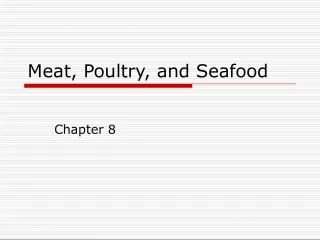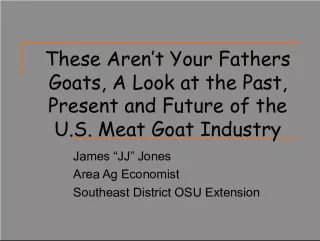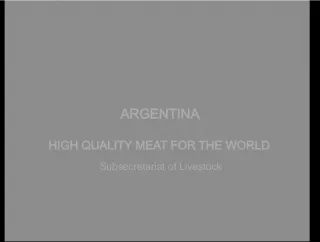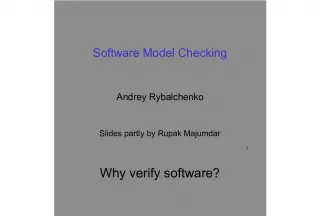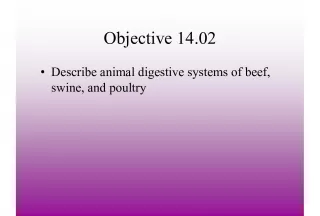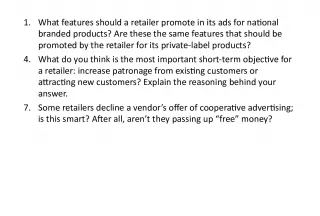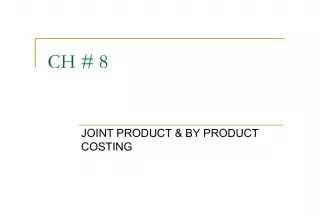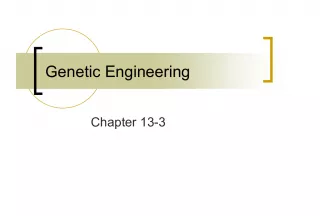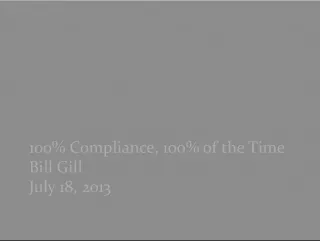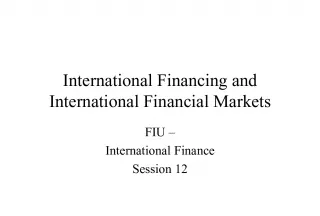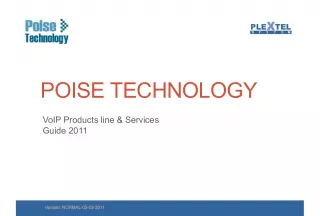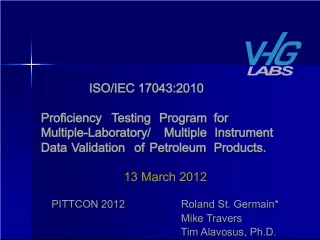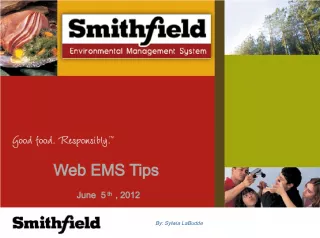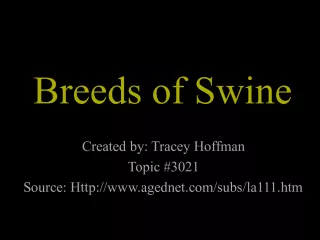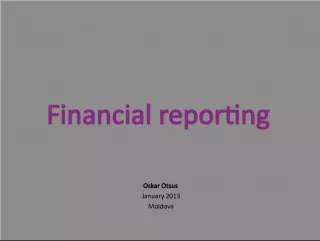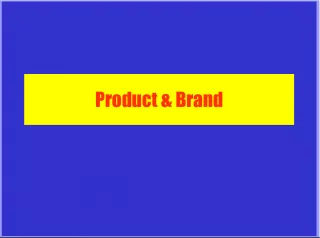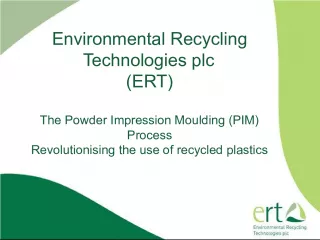Audits Verifying Equivalence in Meat, Poultry, and Egg Products Imports to the US
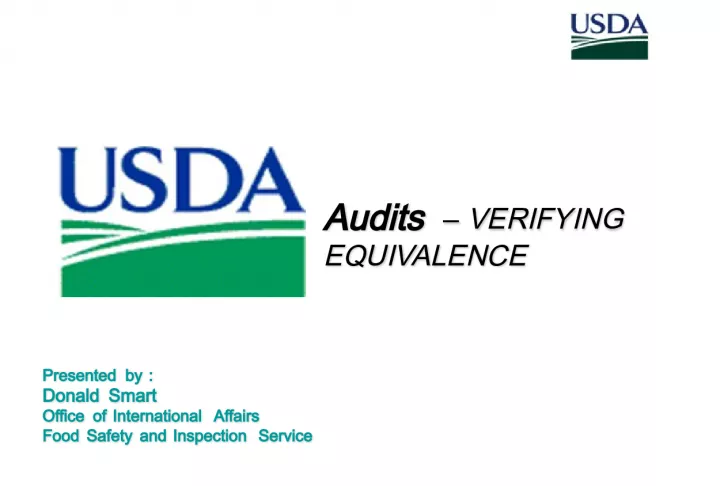

This presentation by Donald Smart from the Office of International Affairs in the Food Safety and Inspection Service outlines the process of verifying equivalence in meat, poultry, and egg products imports to the US to ensure they achieve the same level of protection as products produced in the US.
- Uploaded on | 0 Views
-
 jaydenbrar
jaydenbrar
About Audits Verifying Equivalence in Meat, Poultry, and Egg Products Imports to the US
PowerPoint presentation about 'Audits Verifying Equivalence in Meat, Poultry, and Egg Products Imports to the US'. This presentation describes the topic on This presentation by Donald Smart from the Office of International Affairs in the Food Safety and Inspection Service outlines the process of verifying equivalence in meat, poultry, and egg products imports to the US to ensure they achieve the same level of protection as products produced in the US.. The key topics included in this slideshow are audits, meat imports, poultry imports, egg product imports, equivalence verification,. Download this presentation absolutely free.
Presentation Transcript
1. Audits VERIFYING EQUIVALENCE Audits VERIFYING EQUIVALENCE Presented by : Presented by : Donald Smart Donald Smart Office of International Affairs Office of International Affairs Food Safety and Inspection Service Food Safety and Inspection Service
2. Food Safety and Inspection Service 2 INTRODUCTION Meat, Poultry and egg products imported into the United States must achieve the same Appropriate Level of Protection (ALOP) as products produced in the United States.
3. Food Safety and Inspection Service 3 INTRODUCTION FSIS regulations provide the authority and basis for conducting audits of foreign inspection systems. Requirements center around five risk areas of a foreign countrys inspection system controls: Animal Disease Controls Sanitation Controls Slaughter/Processing Controls Residue Controls Government Oversight/Enforcement
4. Food Safety and Inspection Service 4 SYSTEMS AUDIT FSIS achieves this regulatory responsibility by conducting a systems audit to evaluate an exporting countrys inspection system controls. FSIS works directly with each foreign countrys inspection management officials in our government to government approach.
5. Food Safety and Inspection Service 5 Systems Audits Port-of- Entry Reinspection Equivalence Systems audits represent one-third of FSIS triad of protection. TRIAD APPROACH
6. Food Safety and Inspection Service 6 AUDITS Systems Audits help verify that a country is maintaining equivalence and achieving the ALOP of the United States.
7. Food Safety and Inspection Service 7 AUDITS CURRENT PROCESS
8. Food Safety and Inspection Service 8 AUDITS - Current Audits are conducted on an annual basis. A udits have two principle sub- elements: I n-country evaluation Out-of-country evaluation
9. Food Safety and Inspection Service 9 AUDITS - Current In-Country Evaluation Standardized approach of verifying a countrys competent authoritys implementation and oversight of its food safety system . Includes a review of establishments certified to export to the U.S., government offices providing enforcement activities, and laboratories performing analytical testing.
10. Food Safety and Inspection Service 10 AUDITS - Current In-Country Evaluation Assignment of countries is rotated among auditors. More than one auditor can, and is, used for countries with a larger population of establishments certified to export to the U.S.
11. Food Safety and Inspection Service 11 AUDITS - Current Out-of-Country Evaluation Before conducting an in-country evaluation, the auditor reviews and analyzes the following information: Prior audit results for the past three years. Types and amount of products exported to the U.S. Port-of-entry reinspection results. Consumer Complaints.
12. Food Safety and Inspection Service 12 AUDITS - Current (continued) Third country audit results (e.g., EU). APHIS restrictions. Equivalence determinations since last audit. Other information relevant to the country.
13. Food Safety and Inspection Service 13 AUDITS - Current The information that the auditor has collected is used as a basis to determine the scope of the audit. Combination of statistical chart, history, and other available information to determine the number of establishments. Evaluation of available data to determine number of laboratories and degree of government oversight/enforcement.
14. Food Safety and Inspection Service 14 AUDITS FUTURE PROCESS
15. Food Safety and Inspection Service 15 AUDITS - Future Exporting countries do not need to be audited in the same manner or frequency to verify continuing equivalence. This is based on: Countries are not the same with respect to the degree of inspection system controls; FSIS level of confidence in a countrys ability to maintain an equivalent system can vary from one country to another.
16. Food Safety and Inspection Service 16 AUDITS - Future FSIS is examining different ways to verify that a country is maintaining an equivalent system: Audits could be carried out either during a visit to the exporting country or a desk audit, or a combination of both. Both desk audits and in-country audits would emphasize system controls.
17. Food Safety and Inspection Service 17 AUDITS - Future Some countries have the ability to provide FSIS with information/data regarding their inspection activities and other system- control measures on a continuous basis (365-day audit aspect) FSIS believes it can use this information to supplement evaluation of the activities & effectiveness of foreign inspection programs.
18. Food Safety and Inspection Service 18 AUDITS - Future A standardized approach that must be objective-based. FSIS would verify accuracy of the information provided during the on-site audit activity.
19. Food Safety and Inspection Service 19 AUDITS - Future The scope and timing of an on-site verification audit for any country will consider: Volume of product shipped to the U.S. Types of product shipped and the associated risk. All available historical information. Analysis of information provided by country.
20. Food Safety and Inspection Service 20 AUDITS - Future Some factors that FSIS is considering: What types of information should FSIS ask a country to provide on an ongoing basis?
21. Food Safety and Inspection Service 21 AUDITS - Future Some factors that FSIS is considering: Should the length of time between on-site audits vary according to compliance history?
22. Food Safety and Inspection Service 22 AUDITS - Future Some factors that FSIS is considering: Should the scope of on-site audits vary according to compliance history?
23. Food Safety and Inspection Service 23 THANK YOU
